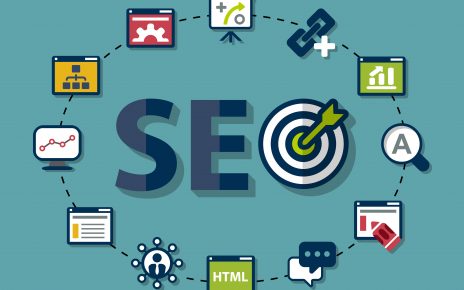In summary: Plenty of web-sites simply just pay lip service to handiness, therefore the matter remains spread out. Internet site designers need to be reminded of the simple ease of access criteria and the way it can influence their design and style for the better.
Accessibility is seen as a media hype term in webpage design nevertheless the actuality is that, more frequently than not, it continues to be only that – a media hype expression. Serious, web designers will say that they wish to make their design as accessible as possible, and yet if you take note of just how many websites which are essentially accessible to ALL internet users, then you’ll certainly appreciate just how much web-site designers ultimately just focus on the majority of this market. As in several circumstances, consumers with handicaps get the short end of the stick.
In terms of advertising, putting a whole lot of effort and resources on for less than 10% to 20% of the market, could feel good. After all the conversion interest rates will surely be even smaller than that. The actual truth nonetheless is that the law in simple terms says that internet sites must be accessible to everyone, including men and women with disabilities. In keeping with the Disability Discrimination Act (DDA), that has been in existence for more than a ten years, companies should “undertake justifiable measures to improve a routine which makes it unreasonably challenging for handicapped consumers to make use of its products. On top of that it declares that to ensure accessibility an example of good program that they should supply may contain “accessible internet sites”. By disregarding legal requirements, internet site owners are not just losing out on an chance to tap into an additional 10% to 20% of the market as well as taking a chance on getting sued.
To guarantee you offer an accessible webpage, the correct place to commence is without a doubt the W3C’s Web Accessibility Initiative (WAI) web-site. Because this discusses the aspect somewhat extensively, I would suggest that you really start out by going into their top priority checkpoints, to determine if your current internet site at any rate adheres to or utilises most of the guidelines.
1. The top priorities with regard to internet site accessibility are listed below:step 1. Offering a text equivalent for non-text features. This is to make sure that screen readers can read through those elements and summarize to visually impaired people whatever is in that part of the web site. We usually provide you with the text equivalent just simply by with the help of Alt tags or perhaps the “longdesc”.
2. Making sure colored information are likewise easily available without colouring. This is for the colour blind.
Three. Making improvements within the natural language of a document’s text and any text equivalents plainly specified. For instance, for those who will probably be utilizing captions it needs to be evident that it is a caption meant for an image and not an element of the paragraph, in such a manner things will certainly make perfect sense whenever read by way of a screen reader.
4. Make things style sheet independent. This article really should be readable even in the event it’s read with out the style sheet. This is a very common downside, even when it comes to basic rendering of a website employing style sheets.
5. Make certain that there is an equivalent content presented for dynamic content. Dynamic content, like flashing text, can be a tremendous problem as screen readers can’t read shifting text. Similarly, people that have movement problems might find it particularly hard to follow moving text. And last, but one of the most hazardous difficulty, is that specific wavelengths may set off seizures for men and women who have photosensitive epilepsy. To ensure this isn’t going to happen you are able to either offer a static equivalent of the dynamic content or enable users to manage the flickering.
Step six. Always keep it sweet and simple. Being concise and using straightforward language makes things less difficult for All Concerned, including individuals with reading disabilities and every day users who hate having to go all the way through useless nonsense. The aforementioned procedures are only the common guidelines specified by the W3C, when you are utilising image samples, tables, frames, and such like, you will find even far more procedures that you follow. In the end, as a web designer you’ll find out that adhering to these accessibility rules will not only greatly influence people with disabilities, but moreover show you how to reconsider your whole procedure to designing a website. This will be a lot more work nonetheless can lead to a simpler and overall far more user-friendly site.
Minimalism and White Space Summarizing: White space is a very important aspect of internet site design. It’s often unnoticed by customers but is an upcoming trend web site designers can’t afford to not recognize. If you happen to make use of white space properly, your internet site designs will definitely raise noticeably.
You will find heaps of web sites with advice with respect to ‘seo ranking’ this is one of the best ones ipswich-seo.co.uk/
Minimalism and white space is really a fast becoming a market trend in web design. Google is probably the poster child for minimalism and white space, and judging just from their achievements, then we can conclude that it really is the way to go. Just before the positive uses and effects of white spaces are highlighted, permit me to just demonstrate in brief what minimalism and white space is, and just how they relate to each other. White space is basically the area or area between the elements of a web site (i.e. the region between the written text, images, footers, etc.).
Minimalism, in web design, is really a idea whereby the type is being used as the main design element, which will mean that imagery, texture, and color takes the back stage. Owing to the way type is given importance in a minimalist design, more white space is ordinarily established.
The significant appeal of a minimalist design, when implemented in the correct way, is that using all the white space benefits in much less visual chaos. This in turn helps the user in terms of concentrating on the essential parts of the web page mainly because unwanted components are not there to distract them. This would mean that there is an increase in the customer’s means to digest and keep the data on the website page. The explanation for this is that considering that there’s much less visual stimulating elements, they can give attention to processing the important data rather then subliminally process other extraneous information at the exact same time. On top of that, it also clearly highlights to the user what they can get and achieve on that page. For instance, in Google’s case, it’s very clear that the consumer needs only to type their search string inside the box and then click the button to obtain their search results. In other websites, it may help in conversions due to the fact the subscribe or buy button is going to be less difficult to find.
Besides its effects on the focus, a minimalist design also invariably result in a far more appealing website page. Though aesthetics is without a doubt extremely highly subjective, generally, implementing more white space delivers simplicity and elegance. Note too that appearance is really powerful in website development since it markedly impacts user satisfaction. The strange thing is that as consumer satisfaction increases, their impression of the usability of a web site also grows, whether or not this is a direct result of the minimalist design or purely their readiness to learn how to get around the internet site much more successfully is not always known, but what’s crucial is that it has a beneficial effect.
Despite all of the favourable things that a minimalist design can bring it is still crucial to keep in mind that it is the correct usage of white space that makes things a lot more useful. Working with a minimalist design and having a lot of white space will not inevitably signify an outstanding website design. Just like in many things, there is simply no clear cut remedy. You’ll need to consider all of the individual content and details that need to be on a internet page to discover exactly how it is possible to make use of white space successfully.
One of the key elements to consider when deciding to go minimalist or not will be the desire feel of the web site. As mentioned above, a minimalist design generally invokes a much more classy feel. As we know, elegance is also usually equated with luxury as well as expensiveness. Hence, it is very clear that if your firm is offering inexpensive furniture in Peterborough, website design of each website page should have a visual impact that shouts affordable and not high-priced. This means utilizing lots of large colored print styles, sales signs, cut prices, and fewer white space. If someone on the lookout for cheap furniture arrives at a webpage with just a single living room chair and the title of the shop on it, it’s not unlikely that that customer will think that prices won’t be in their range and just go to a different web site.
One more factor to think about when experimenting with white space is the idea of active and passive white space. Passive white space is utilised simply to enhance readability of text. Having too little white space between characters and lines, it can be just to difficult to read. Active white space, however, takes it one step further by utilising the white space to draw attention to a exact detail on the screen. For example, by adding just a little bit more white space than usual between a paragraph sandwiched between 2 others and highlighting that paragraph, you automatically draw focus to that line to ensure that even though people might not wind up reading through all the text, they’d at least look over that necessary line first. The exact same is true for adding white space around logos and clickable elements.
The crucial thing in utilising white space is that you simply have to continue to keep on practicing so that determining if more or less white space is needed for each web page. In the end, it’ll come a lot less difficult to you and your web design will get noticed because of that little something consumers do not realise they actually pay attention to – white space.





